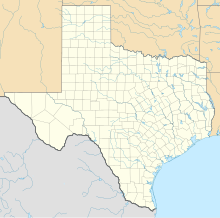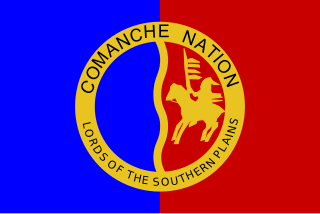
The Comanche or Nʉmʉnʉʉ is a Native American tribe from the Southern Plains of the present-day United States. Comanche people today belong to the federally recognized Comanche Nation, headquartered in Lawton, Oklahoma.
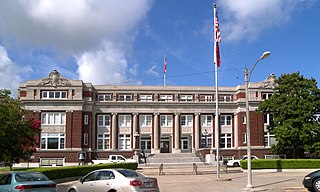
Limestone County is a county in the U.S. state of Texas. As of the 2020 census, its population was 22,146. Its county seat is Groesbeck. The county was created in 1846.

Quanah Parker was a war leader of the Kwahadi ("Antelope") band of the Comanche Nation. He was likely born into the Nokoni ("Wanderers") band of Tabby-nocca and grew up among the Kwahadis, the son of Kwahadi Comanche chief Peta Nocona and Cynthia Ann Parker, an Anglo-American who had been abducted as an eight-year-old child and assimilated into the Nokoni tribe. Following the apprehension of several Kiowa chiefs in 1871, Quanah Parker emerged as a dominant figure in the Red River War, clashing repeatedly with Colonel Ranald S. Mackenzie. With European-Americans hunting American bison, the Comanches' primary sustenance, into near extinction, Quanah Parker eventually surrendered and peaceably led the Kwahadi to the reservation at Fort Sill, Oklahoma.

Cynthia Ann Parker, Naduah, Narua, or Preloch, was a woman who was captured by a Comanche band during the Fort Parker massacre in 1836, where several of her relatives were killed. She was taken with several of her family members, including her younger brother John Richard Parker. Parker was later adopted into the tribe and had three children with a chief. Twenty-four years later she was relocated and taken captive by Texas Rangers, at approximately age 33, and unwillingly forced to separate from her sons and conform to European-American society. Her Comanche name means "was found" or "someone found" in English.
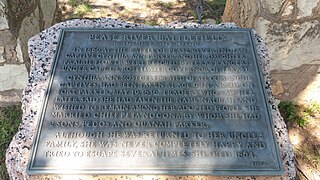
Peta Nocona, also known as Puhtocnocony, or Tah-con-ne-ah-pe-ah, the son of Puhihwikwasu'u, or Iron Jacket, was a chief of the Comanche Quahadi band. He married Cynthia Ann Parker, who had been taken as a captive in a raid and was adopted into the tribe by Tabby-nocca's family. Among their children was Quanah Parker, the last war chief of the Comanche.

The Comanche Wars were a series of armed conflicts fought between Comanche peoples and Spanish, Mexican, and American militaries and civilians in the United States and Mexico from as early as 1706 until at least the mid-1870s. The Comanche were the Native American inhabitants of a large area known as Comancheria, which stretched across much of the southern Great Plains from Colorado and Kansas in the north through Oklahoma, Texas, and eastern New Mexico and into the Mexican state of Chihuahua in the south. For more than 150 years, the Comanche were the dominant native tribe in the region, known as “the Lords of the Southern Plains”, though they also shared parts of Comancheria with the Wichita, Kiowa, and Kiowa Apache and, after 1840, the southern Cheyenne and Arapaho.

The Red River War was a military campaign launched by the United States Army in 1874 to displace the Comanche, Kiowa, Southern Cheyenne, and Arapaho tribes from the Southern Plains, and forcibly relocate the tribes to reservations in Indian Territory. The war had several army columns crisscross the Texas Panhandle in an effort to locate, harass, and capture nomadic Native American bands. Most of the engagements were small skirmishes with few casualties on either side. The war wound down over the last few months of 1874, as fewer and fewer Indian bands had the strength and supplies to remain in the field. Though the last significantly sized group did not surrender until mid-1875, the war marked the end of free-roaming Indian populations on the southern Great Plains.
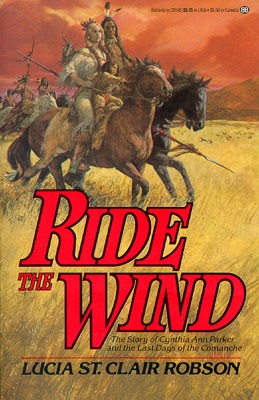
Ride the Wind (1982) by Lucia St. Clair Robson is the story of Cynthia Ann Parker's life after she was captured during the Comanche raid on her family's fort. In 1836, when she was nine years old, Cynthia was kidnapped by Comanche Indians. This is the story of how she grew up with them, mastered their ways, married one of their leaders, and became, in every way, a Comanche woman. Her son Quanah Parker was the last Comanche leader to surrender. It is also an account of a people who were happiest when they were moving, and a depiction of a way of life that is gone forever.
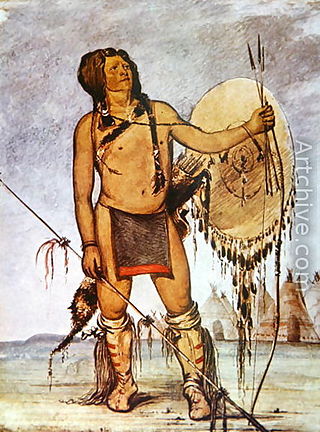
Comanche history In the 18th and 19th centuries the Comanche became the dominant tribe on the southern Great Plains. The Comanche are often characterized as "Lords of the Plains." They presided over a large area called Comancheria which they shared with allied tribes, the Kiowa, Kiowa-Apache, Wichita, and after 1840 the southern Cheyenne and Arapaho. Comanche power and their substantial wealth depended on horses, trading, and raiding. Adroit diplomacy was also a factor in maintaining their dominance and fending off enemies for more than a century. They subsisted on the bison herds of the Plains which they hunted for food and skins.
Rachel Parker Plummer was the daughter of James W. Parker and the cousin of Quanah Parker, last free-roaming chief of the Comanches. An Anglo-Texan woman, she was kidnapped at the age of seventeen, along with her son, James Pratt Plummer, age two, and her cousins, by a Native American raiding party.
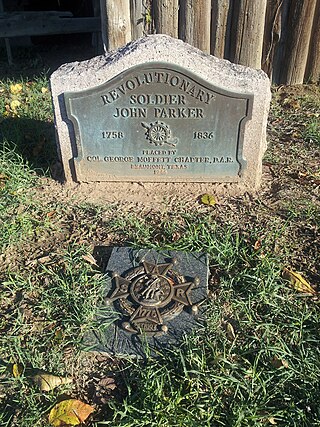
John Parker was an American frontiersman, soldier, surveyor, minister and diplomat. He was born in 1758 in Baltimore County, Maryland. At a young age, Parker's family moved from Maryland to Virginia, where they took part in scouting the frontier in present-day Kentucky and Tennessee alongside Daniel Boone and other American pioneers. After the outbreak of the American Revolutionary War in 1776, frontier conflicts between Patriot settlers and British-allied Indians erupted, which led to the deaths of several of Parker's family members and friends. Parker enlisted in the Continental Army and participated in numerous Patriot campaigns in the western theater of the American Revolutionary War.
Herman Lehmann was captured as a child by Native Americans. He lived first among the Apache and then the Comanche but returned to his Euro-American birth family later in life. He published his autobiography, Nine Years Among the Indians, in 1927.

The Battle of Pease River, also known as the Pease River Massacre or the Pease River fight, occurred on December 19, 1860, near the present-day town of Margaret, Texas in Foard County, Texas, United States. The town is located between Crowell and Vernon within sight of the Medicine Mounds just outside present-day Quanah, Texas.
John Henry Parker (1830–1915) was the brother of Cynthia Ann Parker and the uncle of Comanche chief Quanah Parker. An Anglo-Texas man who was kidnapped from his natural family at the age of five by a Native American raiding party, he returned to the Native American people of his own free will after being ransomed back from the Comanche. He was a member of the large Parker frontier family that settled in central Texas in the 1830s. He was captured in 1836 by Comanches during the raid of Fort Parker near present-day Groesbeck, Texas.
James W. Parker was the uncle of Cynthia Ann Parker and the great uncle of Quanah Parker, principal chief of the Comanche. A man of English American descent, he was a member of the large Parker frontier family that settled in east Texas in the 1830s.
The Texas–Indian wars were a series of conflicts between settlers in Texas and the Southern Plains Indians during the 19th-century. Conflict between the Plains Indians and the Spanish began before other European and Anglo-American settlers were encouraged—first by Spain and then by the newly Independent Mexican government—to colonize Texas in order to provide a protective-settlement buffer in Texas between the Plains Indians and the rest of Mexico. As a consequence, conflict between Anglo-American settlers and Plains Indians occurred during the Texas colonial period as part of Mexico. The conflicts continued after Texas secured its independence from Mexico in 1836 and did not end until 30 years after Texas became a state of the United States, when in 1875 the last free band of Plains Indians, the Comanches led by Quahadi warrior Quanah Parker, surrendered and moved to the Fort Sill reservation in Oklahoma.
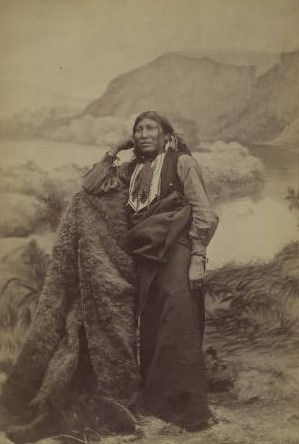
Isatai'i, also known as Isatai, or Eschiti was a Comanche warrior and medicine man of the Kwaharʉ band. Originally named Quenatosavit, after the debacle at Adobe Walls on June 27, 1874, he was renamed Isatai'i. Isatai'i gained enormous prominence for a brief period in 1873-74 as a prophet and "messiah" of Native Americans. He succeeded, albeit temporarily, in uniting the autonomous Comanche bands as no previous Chief or leader had ever done. Indeed, his prestige was such that he was able to organize what was said to be the first Comanche sun dance, a ritual that his tribe had not previously adopted.
Iron Jacket (Puhihwikwasu'u) was a Native American War Chief and Chief of the Comanche Indians.

The Battle of Blanco Canyon was the decisive battle of Col. Ranald S. Mackenzie's initial campaign against the Comanche in West Texas, and marked the first time the Comanches had been attacked in the heart of their homeland. It was also the first time a large military force explored the heart of Comancheria. On 12 August 1871 Mackenzie and Colonel Benjamin Grierson were asked by Indian Agent Lawrie Tatum to begin an expedition against the Kotsoteka and Quahadi Comanche bands, both of whom had refused to relocate onto a reservation after the Warren Wagon Train Raid. Col. Mackenzie assembled a powerful force consisting of eight companies of the Fourth United States Cavalry, two companies of the Eleventh Infantry, and a group of twenty Tonkawa scouts.
Carne Muerto (Tehcap) was a War Chief of the Quahadi band of the Comanche Indians.


